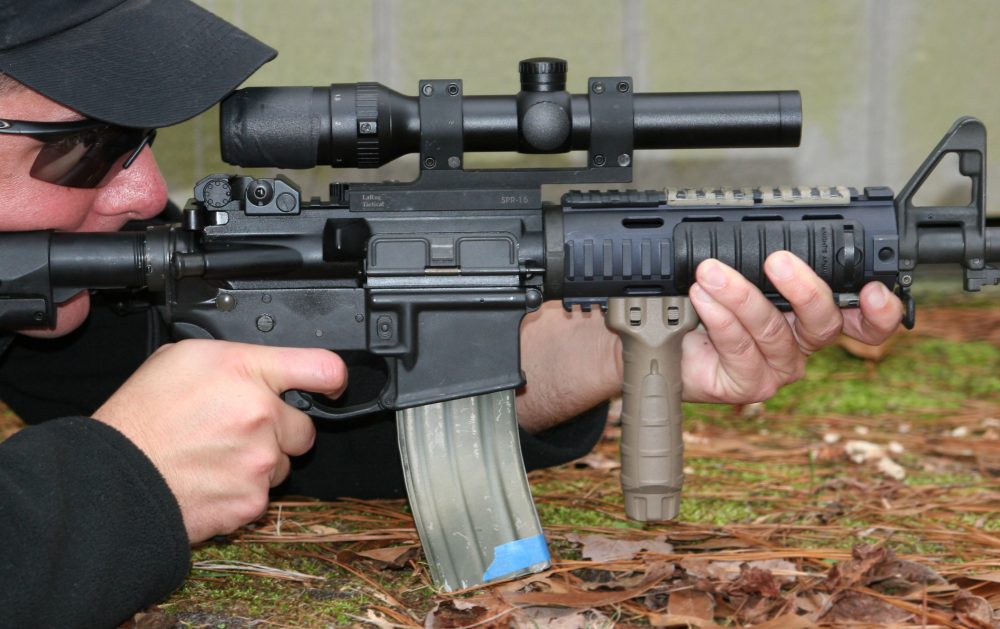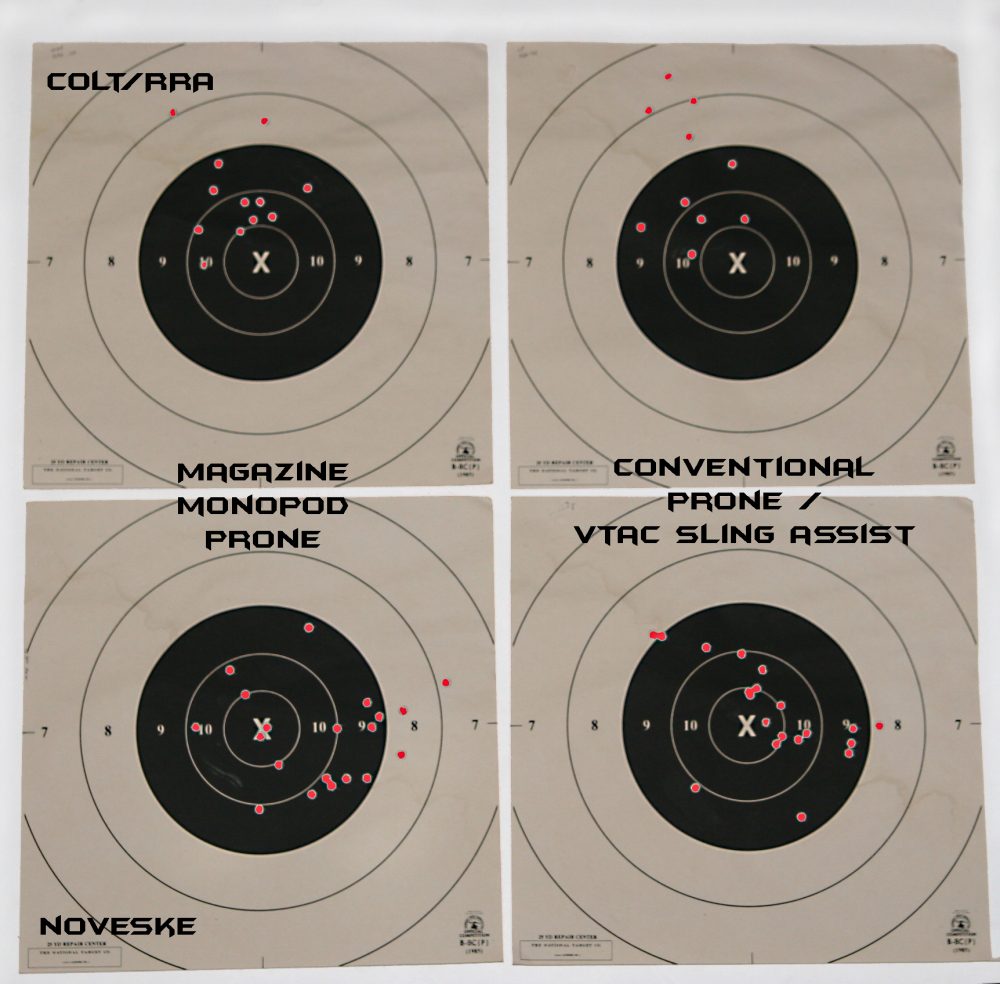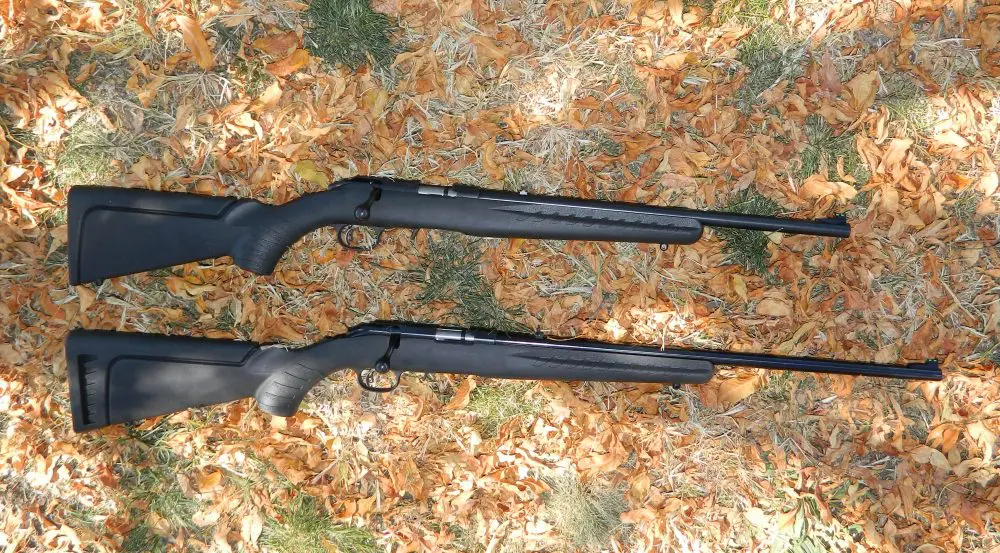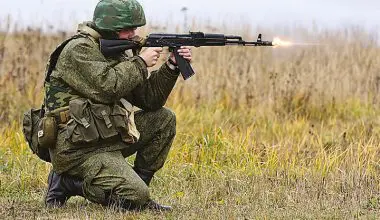For decades Marine Primary Marksmanship Instructors have stalked the 500 yard line, growling from under their pith helmets at prone shooters to “Get that magazine off the deck!”
Why? Because the Marine Corps Order (MCO 3574.2J) forbids shooters to rest the magazine on a ground. This is variously passed off as because it will cause a stoppage, it causes “bad” vibrations and harms accuracy or some other such equally evil reason. The result has been generations of Marines who have a deathly aversion to letting their mags touch the earth or any other support.
Over the last couple of years, I have been exposed to the magazine monopod prone (MMP) position in several carbine classes, and immediately gravitated toward it. In each case it was presented as acceptable for the 50 yard and less format of the classes. I saw no difference in group sizes or points of impact from a hasty prone, and became curious as to just how good the MMP really is. I set out to collect some hard data on it at longer distances.
The caption for the image goes here – directly beneath the image, it’s centered and italicized.
Table of Contents
ASSUMING THE POSITION
In a conventional prone position—regardless of how you break your fall or get to the ground—the entire body is arranged around the forward (support side) elbow. Maximum bone support and minimal muscle are employed, while the body needs a great deal of relaxation to get best results.
None of this applies particularly well to a dynamic environment unless the range is short and the target is full value, allowing a good many shortcuts to be taken in the amount the rifle is supported. The amount and placement of gear and armor can also severely limit the ability to assume a classic prone position, especially if it is configured primarily to fight upright.
In MMP the shooter essentially flops down over his weapon, anchoring and pivoting around the monopod. The solid point of contact allows a great many shortcuts in natural point of aim and the amount of muscle used (more), and translates well to a rapidly executed shot from the ground under less than ideal conditions.
A fully geared-up fighter in cold/wet/exhausted or hot/dusty/scared mode who has a fleeting opportunity to make the shot can work around his individual load and armor plates much more easily using the magazine as a monopod. Some may find they can even get a touch lower to the dirt or not cock the leg/raise the rumpsteak to get the support—good things when going prone to avoid pointed objects coming your way.
Should a shooter flop into a mud hole or snow bank or some other situation, the MMP may not be suitable. In other cases intervening grass/debris may occlude the target with the lower profile of the position, so the shooter may need to be able to revert to classic prone where applicable.
The sky will not fall if the magazine touches Mother Earth. Extra support cost little accuracy and allowed hits as much as 40% faster.
THE TEST
I decided to measure relative group sizes using conventional prone and MMP with two different carbines—a Noveske N4 Light Recce with Aimpoint T1 and a Colt/Rock River Arms with Meopta 4X Scope. I used both aluminum GI mags and PMAGs and several types of ammo. Both rifles have a track record of being about minute and a half rifles, so neither posts tiny groups, but both are consistent. The range I used went out to 220 yards, so accuracy was conducted at 220 and timed drills at 100. Since the idea was to evaluate the MMP as a gunfighting option, the lack of a longer range was not a serious issue.
At 220 yards slow fire, there was no appreciable point of impact shift between the two techniques. There was about three quarters of an inch difference between conventional prone and monopod across multiple groups, loads and rifles.
In each case I called the monopod groups as tighter, as the dot was rock solid in the target, whereas the prone groups had some natural movement. But in each case the conventional prone (assisted by a tight VTAC sling) turned in groups just slightly tighter. The difference worked out to a hair over one-third MOA, so in theory the difference should equal under two inches at the maximum effective range of the weapon. Not bad, and probably within the variations in all but match-grade ammo.
Just to be difficult, I fired some groups off both a shooting mat and bare concrete. I figured that any weakness would be exposed with a mag resting on the hard concrete, but the group was only slightly larger than the others.
VTAC sling cinched down provided real benefits to stability, accuracy and shot recovery.
For the timed-fire portion, a 25-yard repair center (NRA B8 pistol target) with its 5 ½-inch black center was placed at 100 yards. Each drill was initiated from the prone position, buttstock in shoulder and scanning downrange over the carbine. Upon an audible signal from the timer, the respective prone was assumed as quickly as possible and a pair fired as rapidly as I could be certain of getting the hits within the black. I then recorded the time to first shot, the split time between the two shots and the total. I did this 40 times between the different carbines.
The times are listed in the accompanying table, but to sum up, there was a significant advantage in first shot, recovery and total time using the magazine as monopod. There was no difference in point of impact between the methods, and by eyeball the hits were the same. Actually measuring the groups showed that the Noveske in conventional prone held a ¼-inch advantage, and the Colt/Rock River yielded just over a 1/2-inch margin to the MMP.
While both techniques resulted in good groups, the conventional prone was consistently 33 percent slower, and I had to work harder for the hits. With the MMP I was able to fire without a great deal of concern over natural point of aim or how well my legs were arranged.
With the conventional prone I had to use the extra time it took to get into a “good” prone position—either cocked leg/Olympic or military—to guarantee hits on the smallish target. Incidentally, there were no reliability issues with the magazines touching the deck (as there hasn’t been in any of the training others and I have conducted using MMP).
Representative rapid-fire groups fired at 100 yards with shot holes filled in red for clarity. Results were remarkably similar except in time required to get hits.
SLINGS
When I started collecting the data and got into prone, I cinched down my Viking Tactics sling extra tight to see what it would do. I was shocked at how well it stabilized the rifle. I have used VTAC slings exclusively for about three years now because of their utility and suitability for my usage profile, but had never evaluated them as a shooting aid. A few years ago I had briefly toyed with the idea of trying to adapt a Ching sling to the AR, but had essentially given up on sling support when the traditional parade-type sling and its loop option went the way of the dodo.

When I cinched down the VTAC in prone, I felt subjectively close to, but not quite at the level of, support a loop sling provides. It was a bit more effective than the Ching sling on a Scout rifle, if that helps bracket the effect. There was enough support provided that I felt I needed to run the test battery between VTAC assisted and prone with only bone support to prevent the data from being skewed for users who do not use the VTAC.
I first shot a control group with a rest under the forend to establish a baseline at 100 yards. I then rapid-fired pairs prone unslung, recorded the data, and repeated with the Viking sling assisting. The group size was 1/2-inch smaller with the VTAC than unassisted and only 1.37 inch greater than the rested control. The difference in speed was even greater, with the VTAC cutting off 2.8 seconds (37% faster) in breaking the first shot and nearly a full second in recovery to the next shot (20% advantage).
A note about placement: I run my slings attached in the swivel cups on the rear of the stock on the outboard (three o’clock for right handed) side, under my support (left) side armpit and attached just forward of the lower receiver on the nine o’clock rail. Different placement may or may not provide the “magic.”
This test was conducted under absolutely ideal conditions: A well-fed, rested and happy shooter firing under an incredibly blue sky on an empty range in perfect weather.
Despite a shooter who has spent untold hours looped up firing classic prone across manicured greens, the magazine monopod prone still pretty much owned the test, especially against non-sling-assisted prone. Under mild environmental-, time- or stress-induced pressure, the additional stability of the magazine connected to the topsoil would be even more welcome.
The “ouchies” from rough ground, heart-thumping in the sight picture exertion, or eye-pro steaming from humidity in the high grass are but a few of the conditions where the additional point of contact from MMP may mean the difference in getting the shot off.
So, put that magazine on the deck—and get the hits!













